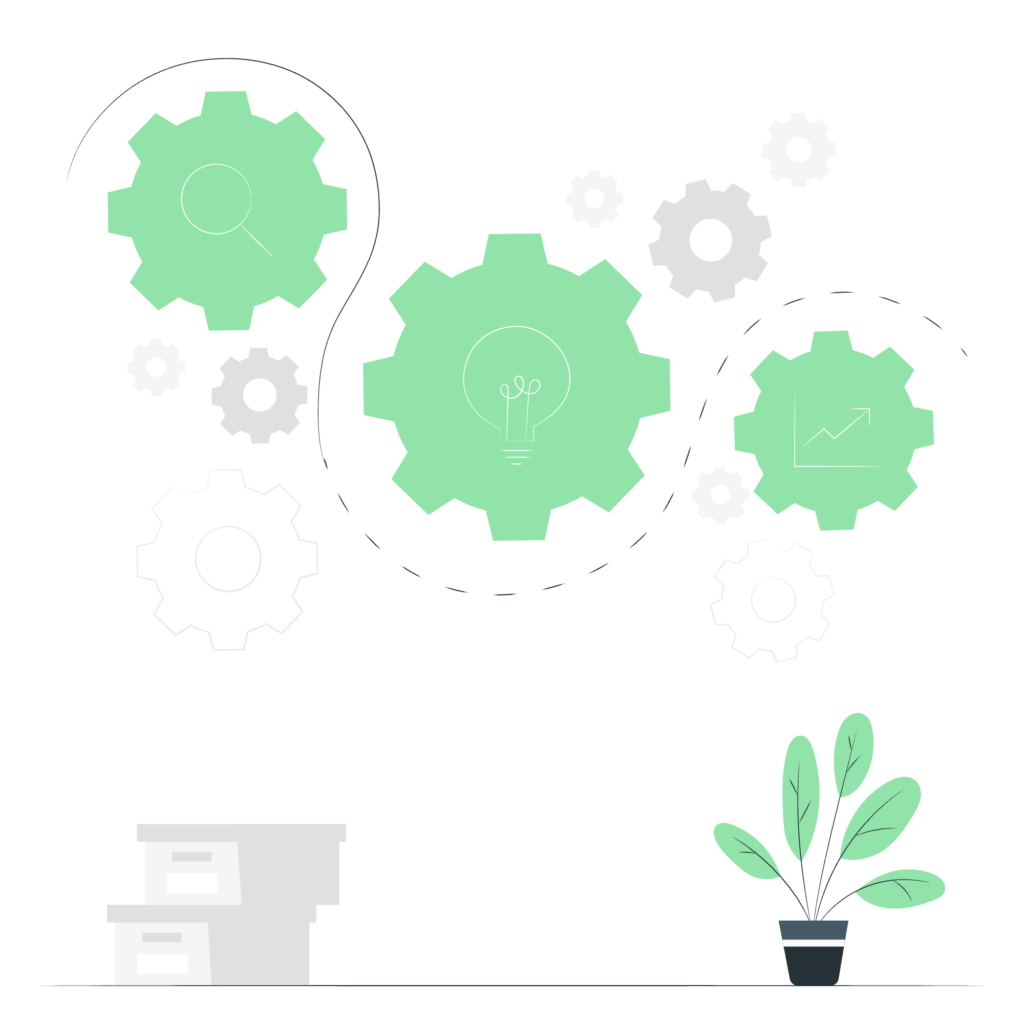Summary: Present here is part 1 of our deep-dive on the challenges and opportunities within the EdTech space in India. This blog provides valuable insights into the EdTech landscape, covering a wide range of topics, such as the opportunities and challenges at different stages of the education journey and a more detailed exploration of some of the models. In Part 1 we go deeper in the Placement as a Service model for colleges. This is the outcome of our conversations with founders, senior leaders and investors in the EdTech sector.
PS: This breakdown is not exhaustive, as we have chosen to focus on specific areas that we found particularly interesting and relevant in the ever-evolving EdTech space.
Breakdown
As we started exploring the EdTech industry, we decided to take a moment and think about the basics. We looked at the different stages that people go through, from early education to professional development and what role EdTech plays. While learning is a life long activity, for simplicity we divide it into 3 phases.
– Early Childhood Education: Using technology and innovative methods to create engaging and effective learning experiences for young children. The goal is to provide a digital nanny which keeps the kids engaged and also an interactive video platform that empowers kids to be active participants. This approach counters passive content consumption and helps sharpen children’s senses and skills. For example, check out Hellosaurus.
– K-12 Education: EdTech companies develop digital tools to improve primary and secondary education by creating enhanced learning materials and platforms for students while providing instructional support to teachers. We excluded it from our analysis due to intense competition, lack of digital-only product market fit, and inability to make progress in the US market due to high customer acquisition costs.
– Doubt Clearing Platforms: EdTech companies offer platforms for students to receive on-demand academic support. They can ask questions, clarify doubts with peers, and connect with subject matter experts to improve their understanding of the curriculum. Monetizing in India continues to be a challenging issue. Check out Doubtnut or Brainly.
– Exam Preparation: In this space, EdTech companies offer resources and tools for students preparing for competitive exams, entrance tests, and other assessments, enabling them to access high-quality study materials and personalized learning experiences. Similar to K-12, we didn’t go deeper here due to intense competition both from new online players & offline players.
– Higher Education as a Service: EdTech companies partner with schools and colleges to provide modern infrastructure, updated curriculum, better skill development, Saas for school and tuition management, and other assistance to improve the learning experience through online courses and collaboration tools. LeadSchool is one prominent example of this model.

While discussing with industry insiders, a pattern emerged: this approach can be applied to colleges as well. For example, providing IIT-accredited (or similarly well known) courses in Tier 2 colleges/platforms and beyond.
– Placement as a Service: Boot camps or placement services to teach college students skills and knowledge that aid in successful placements, often partnering with colleges & companies to provide placement assistance.
– Upskilling Boot Camps: Similar to above, boot camps courses provide practical training in high-demand fields like technology and business. Intensive and short-term, they help students & professionals stay relevant and competitive in the job market. In India, where many engineers are unemployable, boot camps seem like a promising solution. We explore this further in part 2.
– Cross Border Education: Providing students with access to global educational opportunities and resources, allowing them to learn from international educators and opportunity to immigrate. Companies face stiff competition from traditional offline players.
– Learning and Development (L&D): Targeting the needs of businesses and organizations, L&D solutions within the EdTech industry focus on employee training, skill development, and continuous learning to improve productivity and performance.
The list above is not complete and some items may overlap. We decided not to explore anything prior to college due to intense competition. Below are some interesting points on Placement as a Service model.
Placement-as-a-Service in the Colleges
At IITs and top IIMs, the placement cells run by professors and students are highly effective, managing the entire process from inviting companies to conducting interviews. However, beyond the top 50 colleges, the situation is different, which led us to consider offering Placement As A Service (PAAS).
What is PaaS?
- Basically, we offer a platform that works with colleges to train and improve students’ job skills and interview experience.
- We also collaborate and coordinate with companies to create job opportunities.
- By managing this process & by providing a tech platform across multiple colleges, we can increase opportunities for students and companies by offering a wider domestic and international network.
Takeaways From USA
Virtual internships and partnerships are increasingly popular in the United States. Companies like The Forage (raised 22 million USD in Aug’21) and Podium Education (total raise of 32 million USD) offer students the chance to work on real projects for top companies and gain real-world experience. The Forage provides virtual internships and experience programs, while Podium Education offers technology-focused courses and internships in collaboration with universities.
Adapting PaaS for India
To succeed in India, PAAS providers must take a full-stack approach. This requires more than just digital training & upskilling, you possibly will have to go offline. Providers must establish partnerships with both colleges and companies to create student opportunities.
Challenges in Implementing PaaS
There are some complex challenges that one might have to navigate to win.
1. Competition from existing players: The college placement industry is competitive, with companies like Aspiring Minds and CoCubes providing standardized test preparation services that many employers trust. These tests are used to filter and assess students. Therefore, PaaS providers need to find ways to differentiate themselves from these established players.
2. Revenue limitations: PaaS providers may face limited revenue potential as smaller colleges may not have the resources or willingness to invest in external placement services. For example, (as told by one of the industry insiders) LPU, a large university, pays ~4 crores per annum to Aspiring Minds, and smaller universities pay even less. Convincing colleges to allocate more resources for external placement services can be challenging.
3. Limited demand for non-IT roles: Although IT/ITES roles are in high demand, whereas for non-IT roles such as sales and business development demand is lower. Therefore, PaaS providers may find it challenging to place students specializing in non-IT fields, which limits the overall impact and reach of their service.
4. Selling directly to students: Given the revenue limitations and competition in the college space, one alternative for PaaS providers could be to sell their services directly to students. However, this approach comes with its own set of challenges, such as convincing students to pay for additional services (given that demand for Non-IT is less and they are relatively low-salaried jobs) and scaling the business model effectively.
5. Customization and standardization challenges: Companies demand customized training and upskilling programs, which poses a challenge for PaaS providers. Balancing customization and standardization can be complex and affect the service’s efficiency and effectiveness. However, it is solvable by over-indexing on communication, basic analytics, and logic. But this approach may decrease overall impact by making the provider similar to AspiringMinds, CoCubes and other similar companies.
In addition, the pandemic has caused boot camp companies to grow faster and gain more investor attention. This has resulted in more difficulties for the PaaS model.
In conclusion, Placement as a Service (PaaS) presents a challenging solution to bridge the gap between educational institutions and the job market, particularly for colleges beyond the top tier. In Part 2 of our blog series, we will further explore the EdTech landscape, delving into the boot camp space, Learning & Development, and other exciting areas that are shaping the future of education and skill development.
Feel free to share your thoughts or suggest new ideas by contacting me here or leaving a comment below. Also, the co-author for this blog is ChatGPT.


